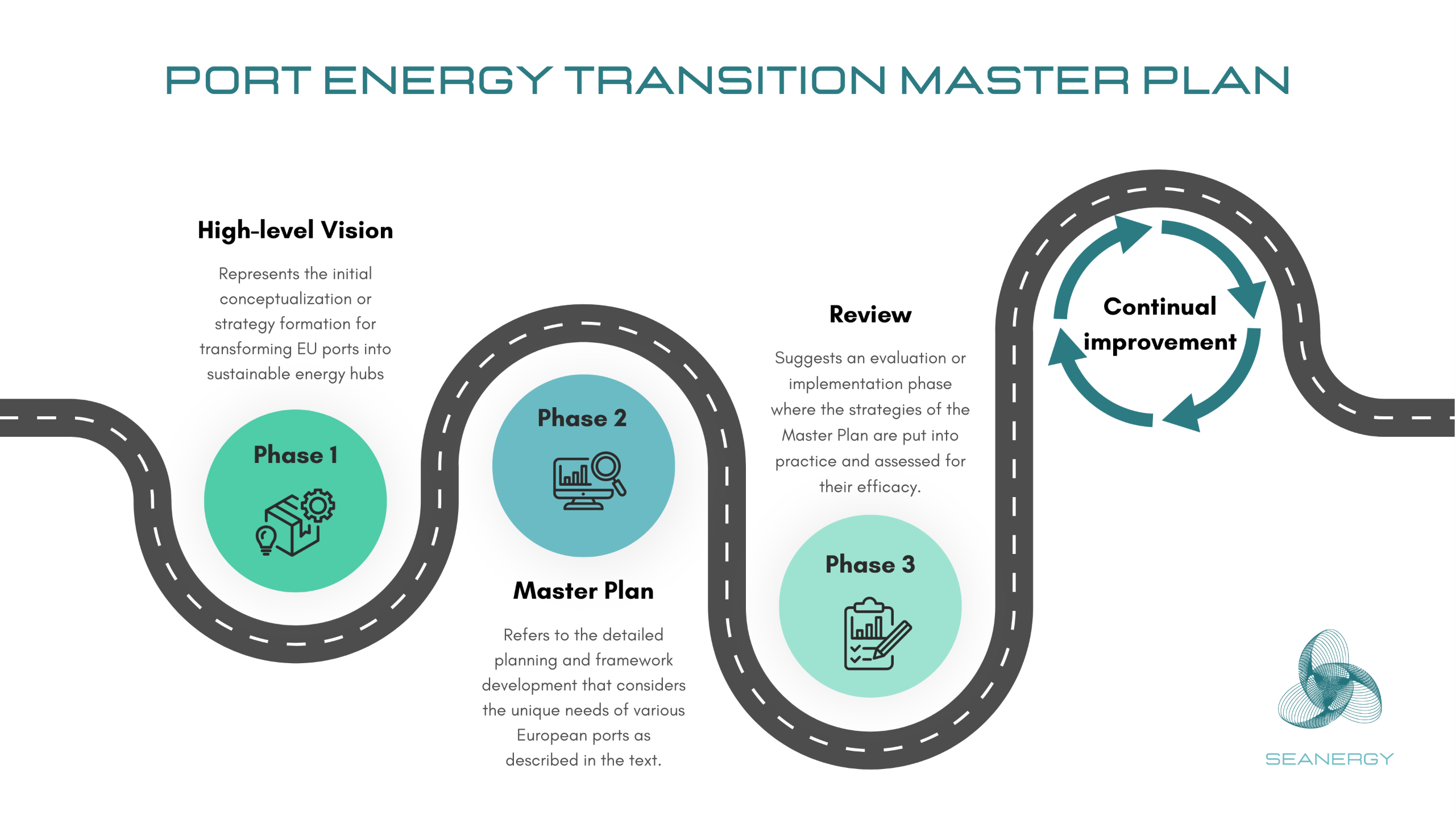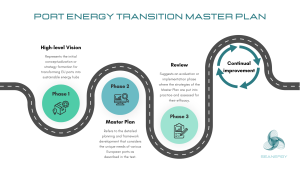What is the Port Energy Transition Master Plan?
The Port Energy Transition Master Plan is a key deliverable of the SEANERGY project, developed in collaboration with leading experts in port management, energy, and environmental sustainability. The Master Plan outlines actionable strategies and solutions to help ports transition to greener energy sources, reduce their carbon footprint, and improve overall operational efficiency.
Key Highlights of the Master Plan
- High-Level Vision (Phase 1): The initial stage focuses on the conceptualization and strategic formulation needed to transform EU ports into sustainable energy hubs. This phase outlines the overall vision for decarbonizing ports and sets the foundation for subsequent planning and implementation.
- Master Plan Development (Phase 2): This phase involves the detailed planning and framework development tailored to the specific needs and characteristics of various European ports. It includes a comprehensive approach to integrating sustainable energy solutions, enhancing port efficiency, and adopting new technologies.
- Implementation and Review (Phase 3): The third phase is dedicated to putting the strategies from the Master Plan into practice. It emphasizes a thorough evaluation of the effectiveness of these strategies, ensuring they meet the objectives for reducing emissions and enhancing sustainability.
This structured, phased approach ensures that ports can strategically plan, execute, and optimize their energy transition journeys, creating a sustainable future for the maritime sector. SEANERGY is committed to supporting ports and their stakeholders in implementing the strategies outlined in the Master Plan. We encourage you to explore the document, share your feedback, and get involved in our ongoing efforts to drive the energy transition in the maritime sector.


